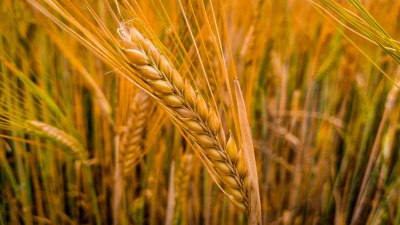The Link Between Weather and Crop Growth
Discover how weather patterns influence crop growth and agricultural productivity. Understand the connection today.

The relationship between weather and crop growth is a complex and vital one that directly affects agriculture, food security, and the global economy. Weather encompasses various elements such as temperature, precipitation, humidity, and wind, all of which can influence how well crops grow. In this article, we will explore the intricate connection between weather conditions and crop performance, highlighting key factors that farmers must consider for successful cultivation.
Understanding the impact of weather on crop growth begins with acknowledging that different crops have unique requirements for optimal growth. Specific temperature ranges are often crucial; for instance, cool-season crops like peas and lettuce thrive in lower temperatures, while warm-season crops such as tomatoes and peppers necessitate warmer conditions. The growing season is therefore intricately tied to climate patterns. In regions where the growing season aligns favorably with warm temperatures and adequate rainfall, farmers can expect significant yields.
Temperature and Crop Development
Temperature is a primary driver of plant growth and development. Each crop species has its own optimal temperature range that facilitates the processes of germination, flowering, and fruiting. High temperatures can accelerate maturation but may also result in stress levels that can impair yield. Conversely, lower temperatures can slow down metabolic processes, leading to delayed growth and harvest.
Moreover, extreme temperature fluctuations can cause damage to crops. For instance, some plants are sensitive to frost, which can kill young seedlings if they are exposed to freezing conditions. Additionally, heat stress during crucial developmental phases, such as pollination, can severely limit crop yields by affecting seed set and the overall health of the plants.
Precipitation Patterns
Water availability is another essential factor in successful crop growth. Precipitation patterns dictate the moisture level in the soil, directly impacting plant health. Too little rain can lead to drought conditions, resulting in water stress for crops, while excessive rainfall can cause flooding, root rot, and other detrimental effects.
Drought can devastate crops, especially in regions that rely heavily on rain-fed agriculture. Most crops require a consistent supply of water throughout their growth cycle to achieve maximum yields. Innovative water management practices, irrigation, and drought-resistant crop varieties can mitigate some of the negative impacts of insufficient rainfall.
On the flip side, heavy rainfall and the associated risks of flooding can destroy crops and lead to soil erosion. Farmers must have strategies in place to deal with these potential challenges, which can include selecting more resilient crop varieties or employing soil conservation techniques to enhance moisture retention.
Humidity and Crop Growth
Humidity levels also play a critical role in crop development. High humidity can promote the growth of certain pests and diseases that can lead to significant losses in yield. For example, fungal diseases thrive in humid environments, affecting crops like wheat, maize, and tomatoes. Farmers often need to adopt effective pest and disease management solutions to protect their crops under humid conditions.
On the other hand, low humidity can cause seedling desiccation and negatively impact plant health. The ideal humidity varies between different crops, making it essential for farmers to monitor local conditions and protect their crops accordingly.
The Role of Wind
Wind, while often overlooked, can also influence crop growth. Strong winds can damage plants, hinder pollination, and contribute to moisture loss. In many cool-season crops, wind can accelerate the rate of evapotranspiration, which increases the need for irrigation. Farmers must consider windbreaks to protect vulnerable crops in exposed areas.
Climate Change Impacts
One of the most significant challenges facing agriculture today is climate change, which has far-reaching effects on weather patterns and crop yields. Changes in average temperatures, precipitation patterns, and the frequency and intensity of extreme weather events can drastically alter agricultural landscapes.
Many regions are experiencing altered growing seasons, with some areas becoming too warm for traditional crops, while others may become more suitable for previously unsuited varieties. Farmers must adapt to these changes, adopting new technologies and practices to ensure resilience against shifting climatic conditions.
Technological Interventions in Agriculture
Advancements in technology are essential in addressing the challenges posed by adverse weather conditions. Precision agriculture techniques, including data collection through IoT devices, AI-driven models, and climate forecasting tools, enable farmers to make informed decisions regarding planting, irrigation, and fertilization strategies based on real-time weather conditions.
These technological innovations help farmers respond swiftly to changing weather patterns, thereby optimizing crop growth and reducing losses. For example, predictive models can analyze weather forecasts to initiate irrigation before anticipated droughts, ensuring crops maintain adequate moisture levels.
Sustainable Agricultural Practices
Utilizing sustainable agricultural practices can further help mitigate the negative impacts of weather on crop growth. Implementing crop rotation, intercropping, and agroforestry can improve soil health, reduce dependency on chemical fertilizers, and build resilience against adverse weather events. These practices enhance biodiversity and promote ecological balance in farming systems.
Moreover, organic farming methods can foster soil fertility and moisture retention, creating a conducive environment for optimal crop growth. Farmers are recognizing the importance of these practices for long-term sustainability and productivity in the face of changing weather patterns.
In conclusion, the link between weather and crop growth is undeniable. Farmers must understand the critical interplay of temperature, precipitation, humidity, and wind for successful agricultural production. As climate change continues to alter weather patterns, it is essential for agricultural practices to evolve to ensure resilient food systems. Embracing technology and sustainable practices are vital components for farmers striving to adapt and thrive in an uncertain climatic future. By carefully monitoring weather conditions and employing adaptive strategies, agricultural productivity can be optimized for future challenges.











